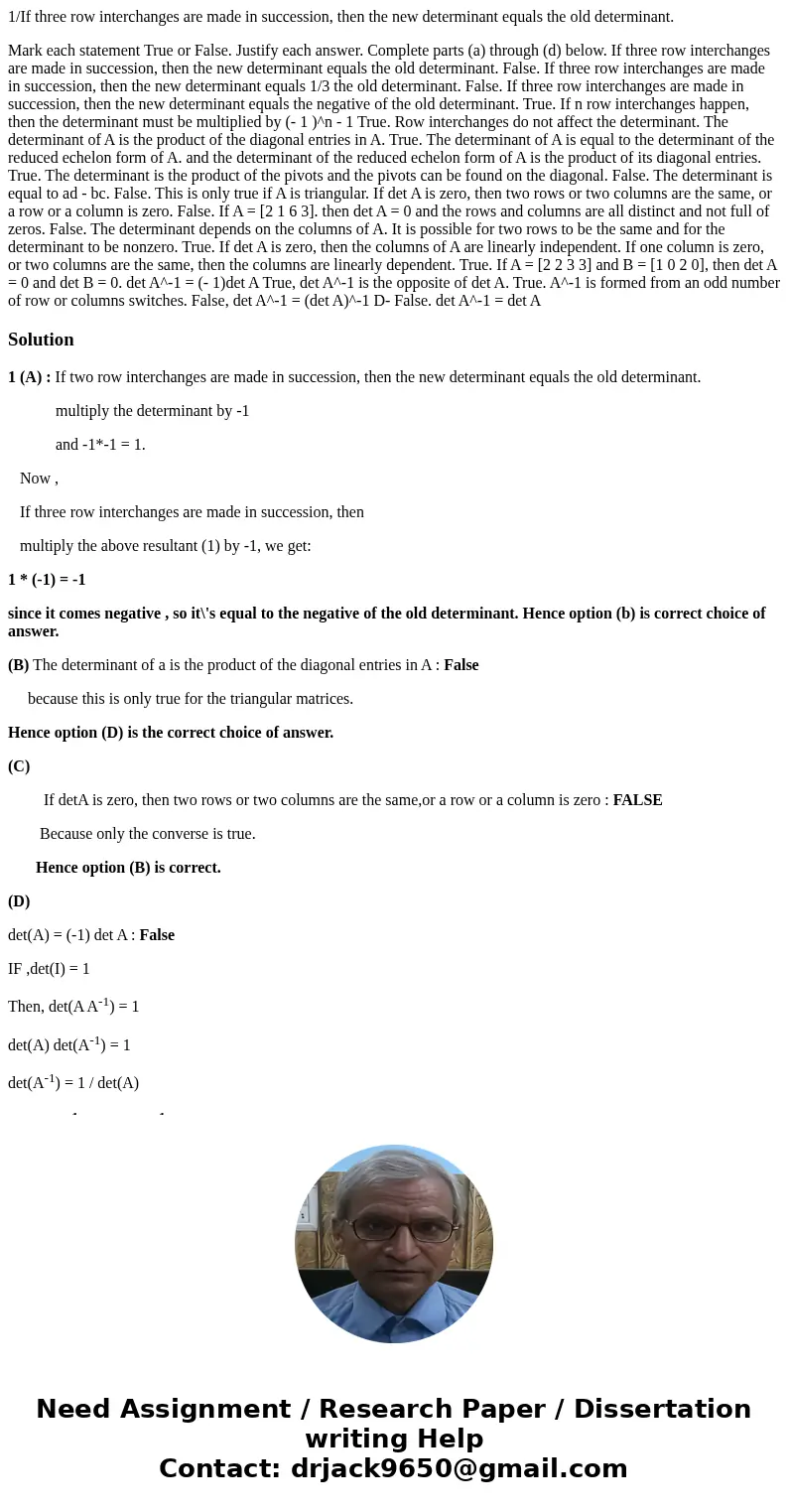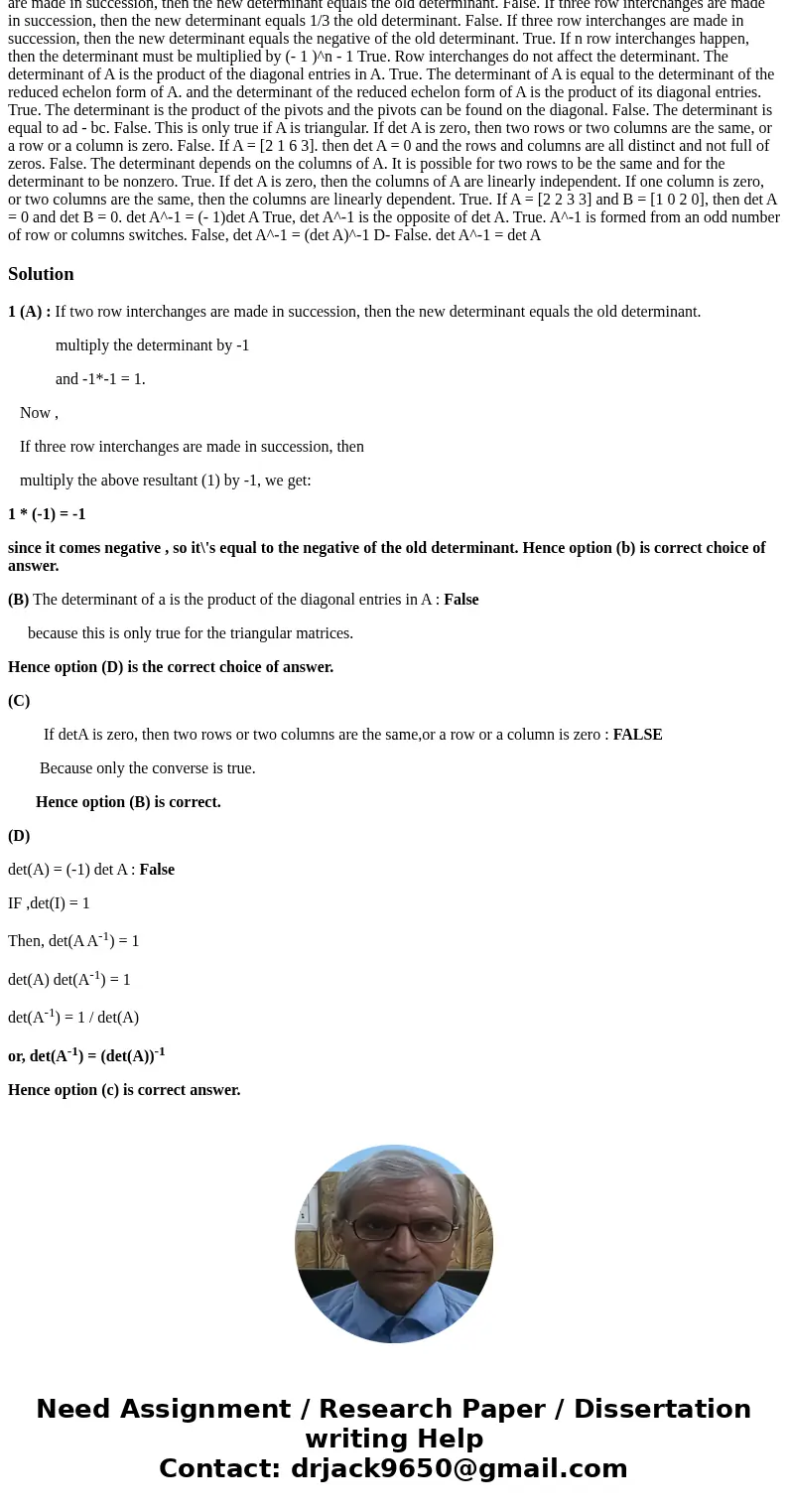1If three row interchanges are made in succession then the n
1/If three row interchanges are made in succession, then the new determinant equals the old determinant.
Mark each statement True or False. Justify each answer. Complete parts (a) through (d) below. If three row interchanges are made in succession, then the new determinant equals the old determinant. False. If three row interchanges are made in succession, then the new determinant equals 1/3 the old determinant. False. If three row interchanges are made in succession, then the new determinant equals the negative of the old determinant. True. If n row interchanges happen, then the determinant must be multiplied by (- 1 )^n - 1 True. Row interchanges do not affect the determinant. The determinant of A is the product of the diagonal entries in A. True. The determinant of A is equal to the determinant of the reduced echelon form of A. and the determinant of the reduced echelon form of A is the product of its diagonal entries. True. The determinant is the product of the pivots and the pivots can be found on the diagonal. False. The determinant is equal to ad - bc. False. This is only true if A is triangular. If det A is zero, then two rows or two columns are the same, or a row or a column is zero. False. If A = [2 1 6 3]. then det A = 0 and the rows and columns are all distinct and not full of zeros. False. The determinant depends on the columns of A. It is possible for two rows to be the same and for the determinant to be nonzero. True. If det A is zero, then the columns of A are linearly independent. If one column is zero, or two columns are the same, then the columns are linearly dependent. True. If A = [2 2 3 3] and B = [1 0 2 0], then det A = 0 and det B = 0. det A^-1 = (- 1)det A True, det A^-1 is the opposite of det A. True. A^-1 is formed from an odd number of row or columns switches. False, det A^-1 = (det A)^-1 D- False. det A^-1 = det ASolution
1 (A) : If two row interchanges are made in succession, then the new determinant equals the old determinant.
multiply the determinant by -1
and -1*-1 = 1.
Now ,
If three row interchanges are made in succession, then
multiply the above resultant (1) by -1, we get:
1 * (-1) = -1
since it comes negative , so it\'s equal to the negative of the old determinant. Hence option (b) is correct choice of answer.
(B) The determinant of a is the product of the diagonal entries in A : False
because this is only true for the triangular matrices.
Hence option (D) is the correct choice of answer.
(C)
If detA is zero, then two rows or two columns are the same,or a row or a column is zero : FALSE
Because only the converse is true.
Hence option (B) is correct.
(D)
det(A) = (-1) det A : False
IF ,det(I) = 1
Then, det(A A-1) = 1
det(A) det(A-1) = 1
det(A-1) = 1 / det(A)
or, det(A-1) = (det(A))-1
Hence option (c) is correct answer.


 Homework Sourse
Homework Sourse